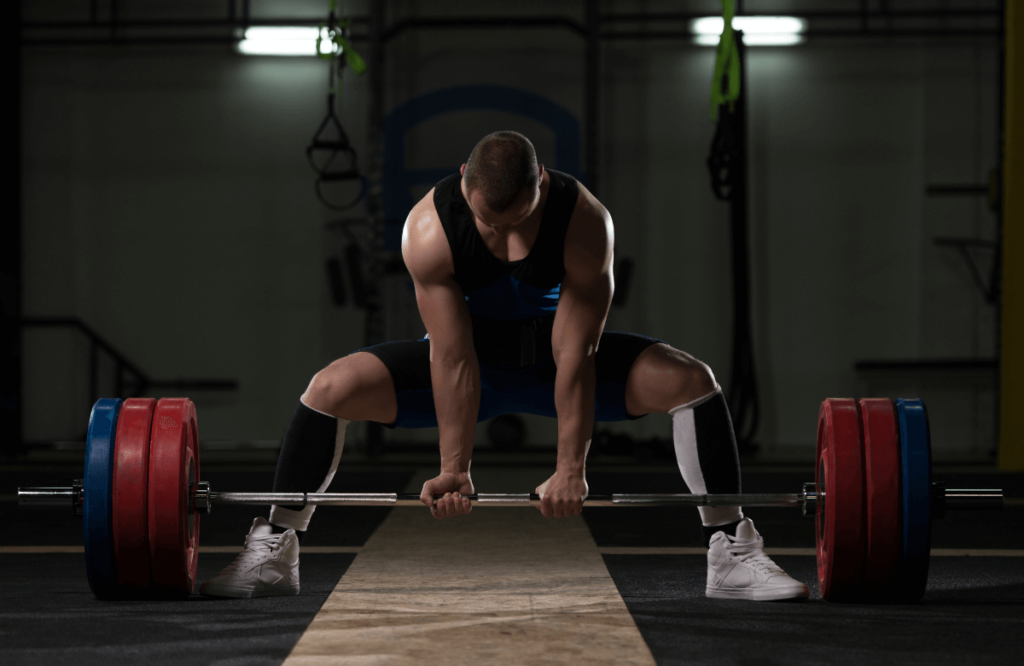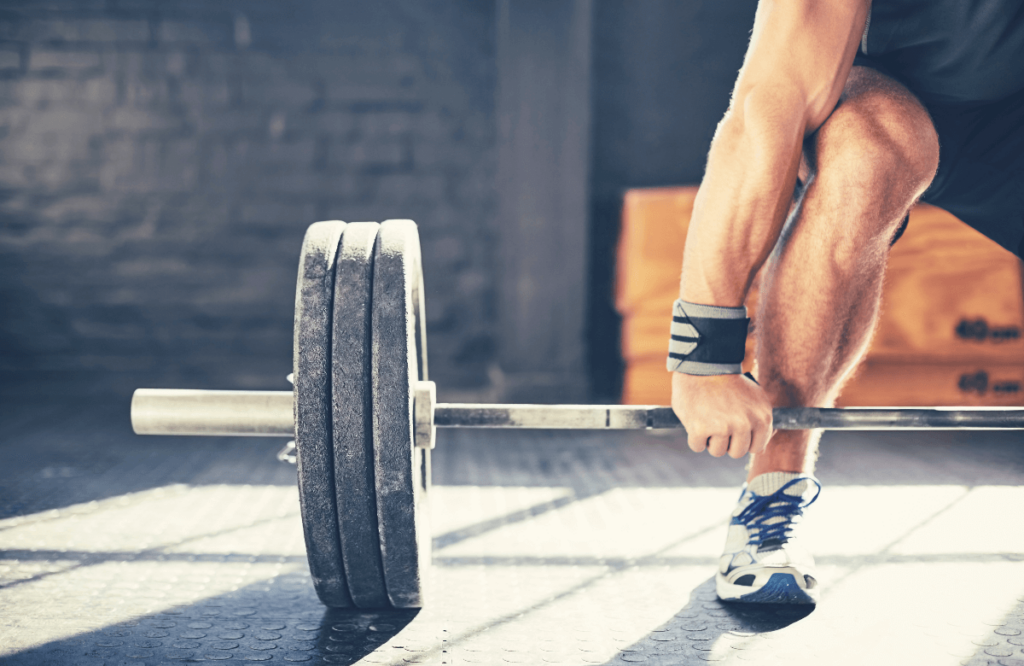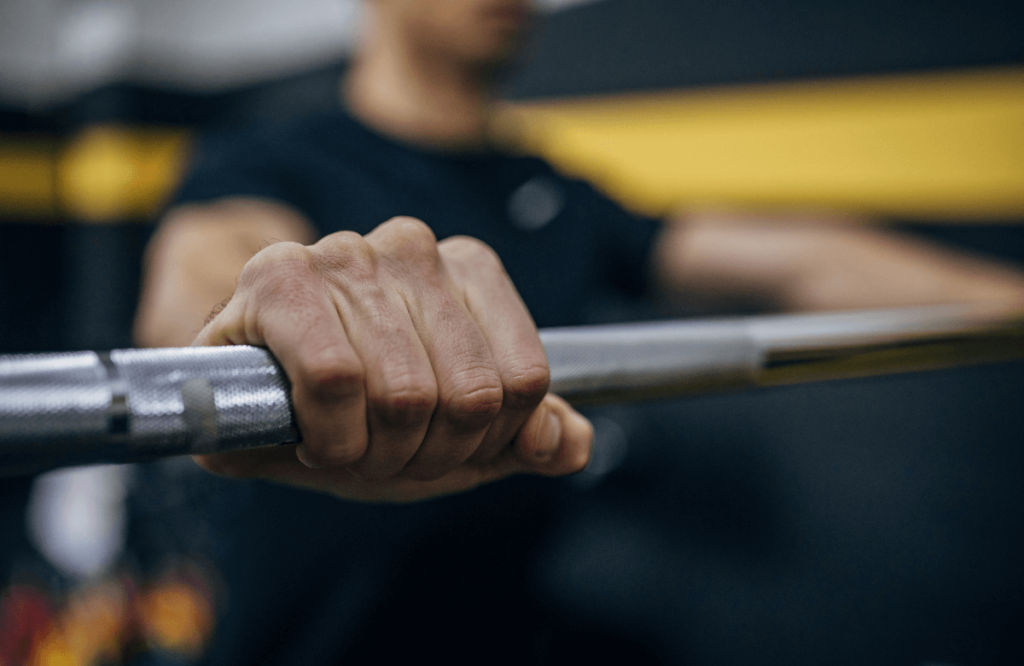Weightlifting is an excellent way to become healthier and get into shape. Building muscle is believed to be one of the best ways to kickstart your metabolism and tackle stubborn fat. It’s also great for your body, which craves movement.
If you’re just getting into lifting regularly, you might be surprised to learn that there are many types of barbells out there. Educating yourself on multiple types of barbells and how you can incorporate them into your workout is a great way to get maximum benefit from your lifts.
Today we’ll learn more about each kind of barbell and its benefits for your training.
Jump to:
- How Many Different Types of Barbells Are There?
- Why Are There So Many Different Types of Barbells?
- 17 Types of Barbells You Should Know
- How Do I Choose the Right Barbell for Me?
- FAQs About the Types of Barbells You May Encounter
- What Is the Best Multipurpose Barbell?
- What Is the Best Barbell for Advanced Lifters?
- Should You Use Multiple Barbells?
- What’s the Main Difference Between a Straight and Curved Barbell?
- Do Different Barbells Use Different Weight Plates?
- Which Types of Barbells Are Most Common?
- Is It Possible for a Barbell to Break?
How Many Different Types of Barbells Are There?
If you’re new to weightlifting, you may think a barbell is a barbell and they’re all created equally. But there’s a variety and you can use them for different purposes to improve your routines.
We’d like to highlight 17 different barbell types that you can use when lifting weights. Your gym may not have all of these, but at least you’ll know how to use the ones they have.
Why Are There So Many Different Types of Barbells?
Believe it or not, there’s a purpose for each barbell. Each bar works a unique set of muscles, and the different barbells can also make a workout simpler or more complex, depending on your goals. Therefore, using multiple types of barbells can create a well-rounded workout that can have impressive health benefits.
Most lifters in a standard gym will only use two or three types of barbells at once, but champion lifters and bodybuilders will use more. There are competitions based around certain types of barbells.
You don’t have to be a champion bodybuilder to use various bars, though. You just need to know what they are and how to use them. They may have subtle differences, but they can still maximize your workouts.

17 Types of Barbells You Should Know
There are 17 different types of barbells we’d like to look at that are good for weight lifting workouts. Each has unique traits and benefits, which may be confusing when you’re in the weight room.
Let’s look at each type in more detail so you’ll know which type is best for you and your training goals.
1. Standard Barbell
The standard barbell is the most common type with which most people are familiar. It’s the bar most people start using to lift. It’s a simple, straight 6 ft metal bar that usually weighs 20-25 pounds.
You place weighted plates on the ends of the bar and it has knurling, which refers to the grooved or ridged sections in the middle designed to improve grip. Most people use the standard barbell for bench presses, squats, deadlifts, and overhead presses.
2. Olympic Bar
The Olympic bar is similar to the standard barbell, but it’s heavier at 45 lbs and longer at 7 lbs. Most gyms carry both standard and Olympic barbells. As the name implies, this is the bar used for standard Olympic lifts.
The Olympic bar is designed to handle heavier weights and to make the lift more challenging. The ends are slightly thicker and require specialized weights to fit them.
An important variation is found in manufacturing. Olympic barbells are made from a particular type of steel that can improve the bar’s flex or bounce. Improved flex is particularly beneficial in exercises such as the snatch or the clean and jerk, particularly when you’re lifting heavier weights.
Additionally, the center knurl on the Olympic bar is smoother than on traditional barbells. Olympic athletes tend to use quick or fast movements, and more aggressive knurling can injure their hands.

3. Powerlifting Bar
The powerlifting bar is similar to the Olympic bar as it’s a straight bar with thick ends. But unlike the Olympic bar’s improved whip, powerlifting barbells are more rigid and composed of a steel alloy designed to hold massive weights. The higher-quality steel also makes powerlifting bars last longer than Olympic bars.
This bar is often used as a competition bar. Grip marks are modified to be thinner for competitive weightlifters, which helps them maintain legal handholds.
4. Women’s Bar
The women’s bar is similar to the standard and Olympic bars, except it’s shorter, lighter, and has smaller diameters. The smaller diameter is particularly beneficial for smaller hands to grip it. Otherwise, the women’s bar performs very similarly to the Olympic bar.
A standard women’s bar is usually 15-20 pounds and the Olympic women’s bar is 33 pounds according to regulation. The standard women’s bar might be 5-6 ft while the Olympic women’s bar is regulated at 6.5ft.
5. Hex or Trap Bar
The hex or trap barbell is a four-sided, trapezoidal barbell. The user stands in the middle of the bar and lifts it around their body. The range of motion with this bar is significantly limited, especially at the shoulders and elbows.
Because you keep your arms mostly at your side, it’s better for adding weight to your leg workouts. The hex bar also shifts the user’s center of gravity, which can reduce joint strain when lifting.
6. Swiss Bar
The Swiss bar, often called a football bar, is a four-sided tool like the hex bar, but the user doesn’t stand in the middle. They lift it similarly to a standard bar.
The Swiss bar is a specialty barbell that provides a more neutral grip that’s good for arm and torso strength training. Many people use the Swiss bar for rowing or pressing movements.
In fact, the Swiss is ideal for arm lifting workouts because it reduces wrist or shoulder discomfort. However, the collars can be small, which means they can’t hold heavier weights.

7. Safety Squat Bar
The safety squat bar is a more comfortable, user-friendly bar designed for beginning squatters. The safety bar has attached shoulder pads and two arms extending from the main shaft.
The users hold onto the two arms and the pads rest on their shoulders as they squat. Although this bar is more comfortable on the shoulders, it can also change the structure of the squat. It can work other muscles more intensely than when completed with traditional barbells.
Therefore, it’s important to have excellent form and activate the stabilizer muscles when using this bar.
8. Tsunami Bar
The tsunami bar is an oscillating, highly flexible bar designed to increase speed, strength, and muscle contraction speed. It’s a very specialized barbell backed by science to improve performance.
The bar flexes and moves throughout the lift, with the most significant amount of flex occurring at the top and bottom of the lift. Because of the movement, the bar is not ideal for novices.
But for experienced lifters who can control the exercise despite the movement, the tsunami bar’s oscillating waves maximize their lifts. They can use it for a range of exercises to help improve strength and power.
9. Cambered Bars
Experienced lifters may also use the cambered or arched bars to improve their lower body workouts. A cambered bar rests on the shoulders and then curves down the lifter’s sides.
This unique shape changes the focus on the squat to the posterior chain. It offers a tighter squat due to the swinging of the bar and the weights. It can maximize your squat movements for better results.

10. Deadlift Bar
Although almost identical to the standard bar, the deadlift bar has key differences. Most importantly, the deadlift bar has more whip than the traditional barbell, making it ideal for quick lifts like a deadlift or clean and press.
The deadlift bar can also have a more aggressive knurl because a good grip is crucial when safely completing a deadlift. It helps with quick movements, too.
Also, if you’re shopping for your home gym, note that deadlift bars can be more expensive than the standard bar.
11. Axle Bar
Weightlifters frequently use the axle bar during strongman training and competitions. It’s a straight barbell like the standard, but it’s a thicker version. You might use it for axle clean and press exercises.
The barbell’s larger diameter can make gripping the bar more difficult, especially for individuals with smaller or weaker hands. But when used correctly, the wider grip can help build grip strength faster than traditional bars.
12. EZ Curl Bar
The EZ curl bar features a wavy bar with knurled sections in the center. This bar type is used almost solely for arm strength training and primarily for bi-cep curls.
The EZ curl bar is lighter and smaller than your standard bar, which makes curling easier and faster. Also, the curved shape makes curling easier on the wrist. It’s great for casual lifters.
13. Log Barbell
With a long history in strongman competitions, log barbells are usually reserved for extreme lifters. They can hold significantly heavier loads–up to 1200 pounds. As you might expect, it has a much thicker shaft.
It gets its name not only for its size but also its historical significance. These barbells were literally made from logs at their introduction.
Modern log barbells are metal. Because of their shaft thickness, there are two notches containing perpendicular bars that the lifter holds. Needless to say, it’s a bulky handhold designed to hold immensely heavy weights, so usually only the most extreme weight lifters use log barbells.

14. Earthquake Bar
The earthquake bar is also called a bamboo bar because it was originally made from bamboo. Original makers found that the bamboo increased bar stability and created oscillating kinetic energy, supposedly improving muscle stability.
The earthquake bar is highly unique because it only weighs about 6 lbs and is 80 inches long. However, it can hold 200-300 pounds thanks to its flexibility.
Earthquake bars also don’t absorb vibrations; instead, they amplify them and cause the bar to quiver like an earthquake, hence the name. Most earthquake bars can hold traditional weights. However, some have ridged collars to hold weights that dangle from bands.
15. Freak Bar
The freak bar is a relatively new, patent-pending bar that’s growing in popularity among specialized training equipment. It has springs on the grips designed to help with presses, deadlifts, and shrugs.
It’s supposed to provide increased bar stability because the user can move the springs mid-lift. The movement is designed to improve upper body strength and offer variations in traditional workouts. As a result, using this bar can significantly strengthen upper body muscles, ligaments, connective tissue, and tendons.
16. Buffalo Bow Bar
Chris Duffin, a well-respected powerlifter, created the Buffalo bow bar. The bar is curved to help performance in both squatting and lifting exercises.
Experts suggest it may hold up to 2000 pounds, making it one of the strongest bars out there. The curved design also reduces back and shoulder tension as well as bicep strain. It might be more comfortable on the wrists during lifting thanks to the neutral handles.
17. Kabuki Transformer Bar
Chris Duffin and his Kabuki Strength company also designed the Kabuki transformer bar. It has 24 different adjustments, allowing lifters to tailor their workouts to target specific muscles.
This bar type is similar to the safety squat bar, which has shoulder pads and two arms attached to the barbell shaft. It’s a great specialty bar for heavy squats.

How Do I Choose the Right Barbell for Me?
When deciding on the right barbell, several factors can affect your decision. Think about the exercises you’ll do, the total weight you’ll lift, and which muscles you want to strengthen.
You’ll likely find that more than one type of barbell will suit your needs. Your gym likely has a few barbells you can try, but you can find even more at specialty strength gyms. Get a day pass to one of these specialty gyms, and you can peruse the different types of barbells to see which ones you like best.
Ideally, you’ll find a combination of barbells to improve your strength-building regime.
FAQs About the Types of Barbells You May Encounter
Even with the best research, you may still have questions. Here are some of the most common questions we see.
What Is the Best Multipurpose Barbell?
Standard bars and Olympic barbells typically make the best multipurpose barbells. They’re a good option for the home gym because you can do various lifts using only one barbell.
Now, determining the best multipurpose barbell can be different for everyone because there are multiple factors to consider, including strength training goals. Go over your priorities and find the right bar for you.
What Is the Best Barbell for Advanced Lifters?
This is also a difficult question to answer because advanced lifters can use many barbell types.
Our best advice is to visit a specialty strength training gym and test out different barbells. You may find that your preferred barbell changes based on the exercise you’re doing.
Be sure to talk to a professional before trying more advanced barbells. Your experience level will designate whether or not you have a comfortable experience trying various bars.
Should You Use Multiple Barbells?
Many lifters own multiple bars, and there are many benefits to doing so. For example, having more than one barbell lets you do a series of lifts back-to-back, creating a power workout session.
And if you prefer working out in groups, having multiple barbells can let you work out with a friend or group without anyone waiting to lift.

What’s the Main Difference Between a Straight and Curved Barbell?
The main difference between a straight and curved barbell is, quite literally, the shape. A curved barbell has a curve to the main shaft, whereas a straight bar is straight.
Simple as that.
But there may be key differences in the type of curve and the benefits those curves can provide when lifting. Additional research into the types of curved barbells can shed light on the benefits of each.
Do Different Barbells Use Different Weight Plates?
Most barbells can use universal weight plates but some barbells, such as the Olympic, have specialized plate sizes. Not all plates will fit on all bars.
Research your barbell type to determine the weight plate compatibility with other barbells.
Which Types of Barbells Are Most Common?
The most common type of barbell is the standard or traditional barbell. However, most gyms often have powerlifting, women’s, and curling bars available as well.
Is It Possible for a Barbell to Break?
The short answer is yes, a barbell can break. But it’s not likely. A good quality barbell that’s used correctly should not break. If you follow the manufacturer’s instructions and don’t overload the barbell, you shouldn’t have any problems with your barbell breaking.
That being said, barbells can wear down over time. The knurling and protective coating can wear off. Some barbells may also bend slightly over time with repeated use of extremely heavy weights. Therefore, you may have to replace your barbells at some point, but it will be a gradual process.














